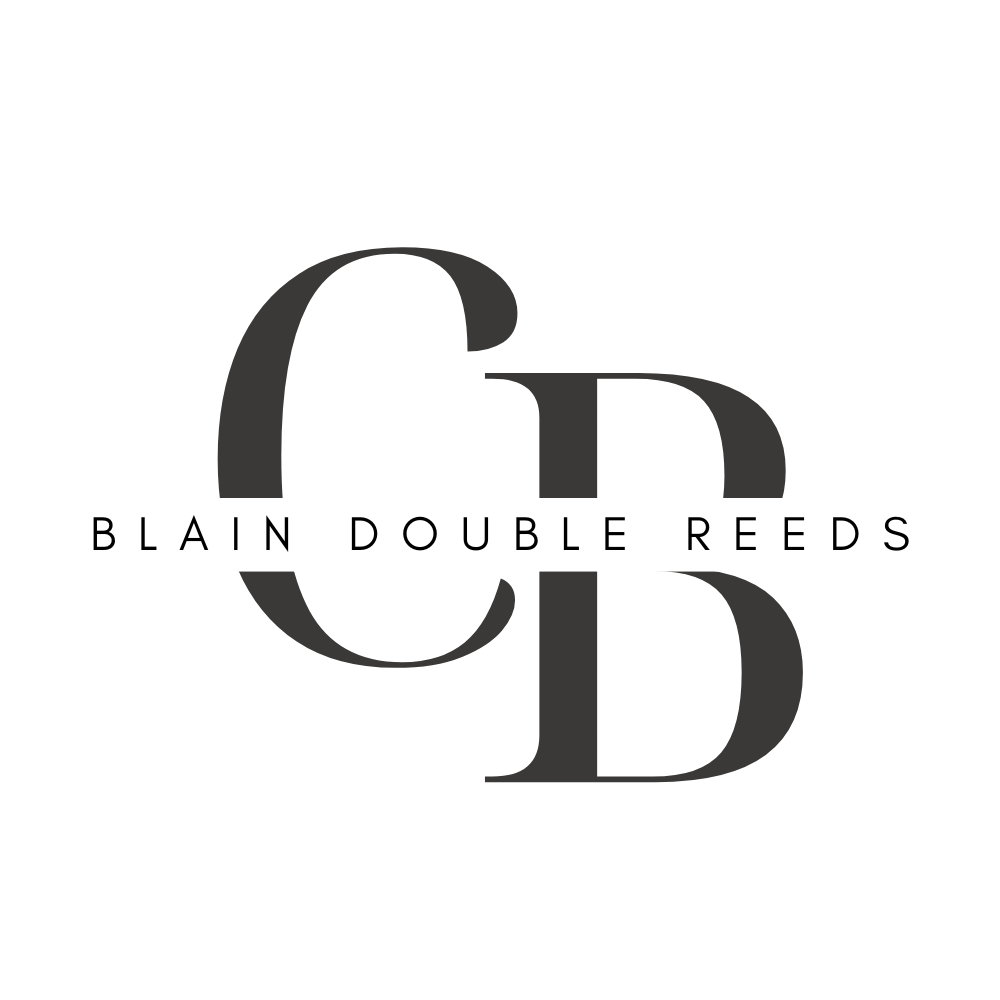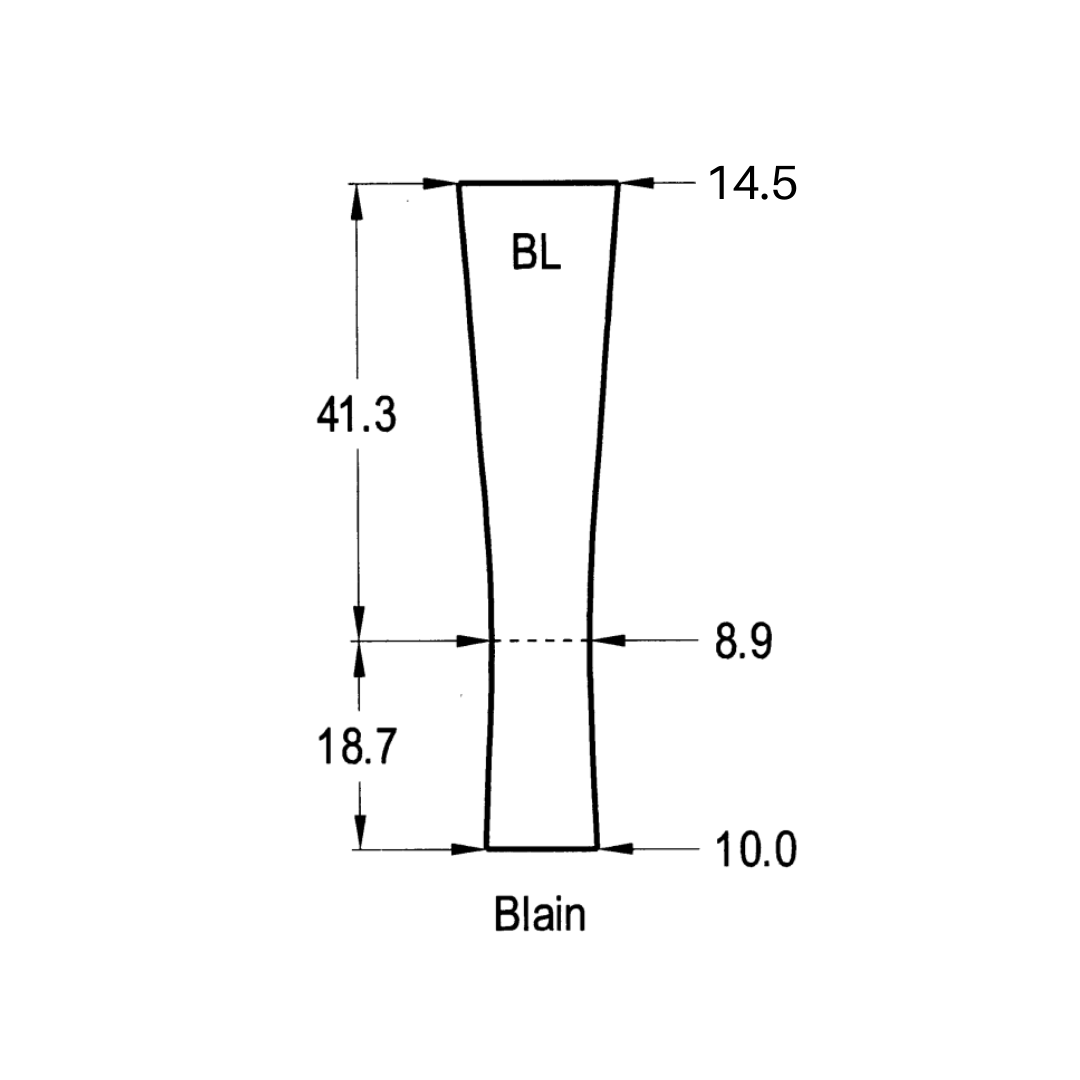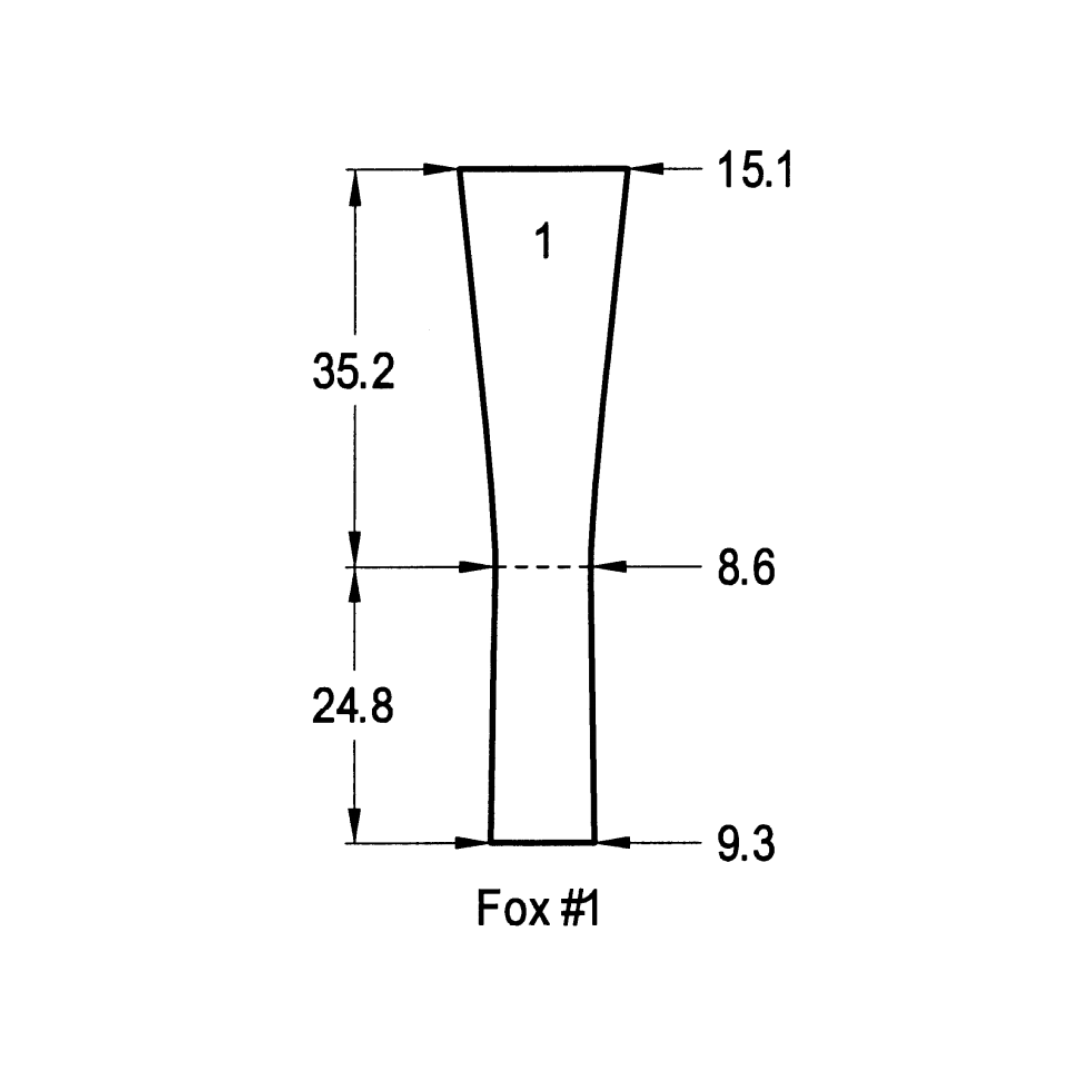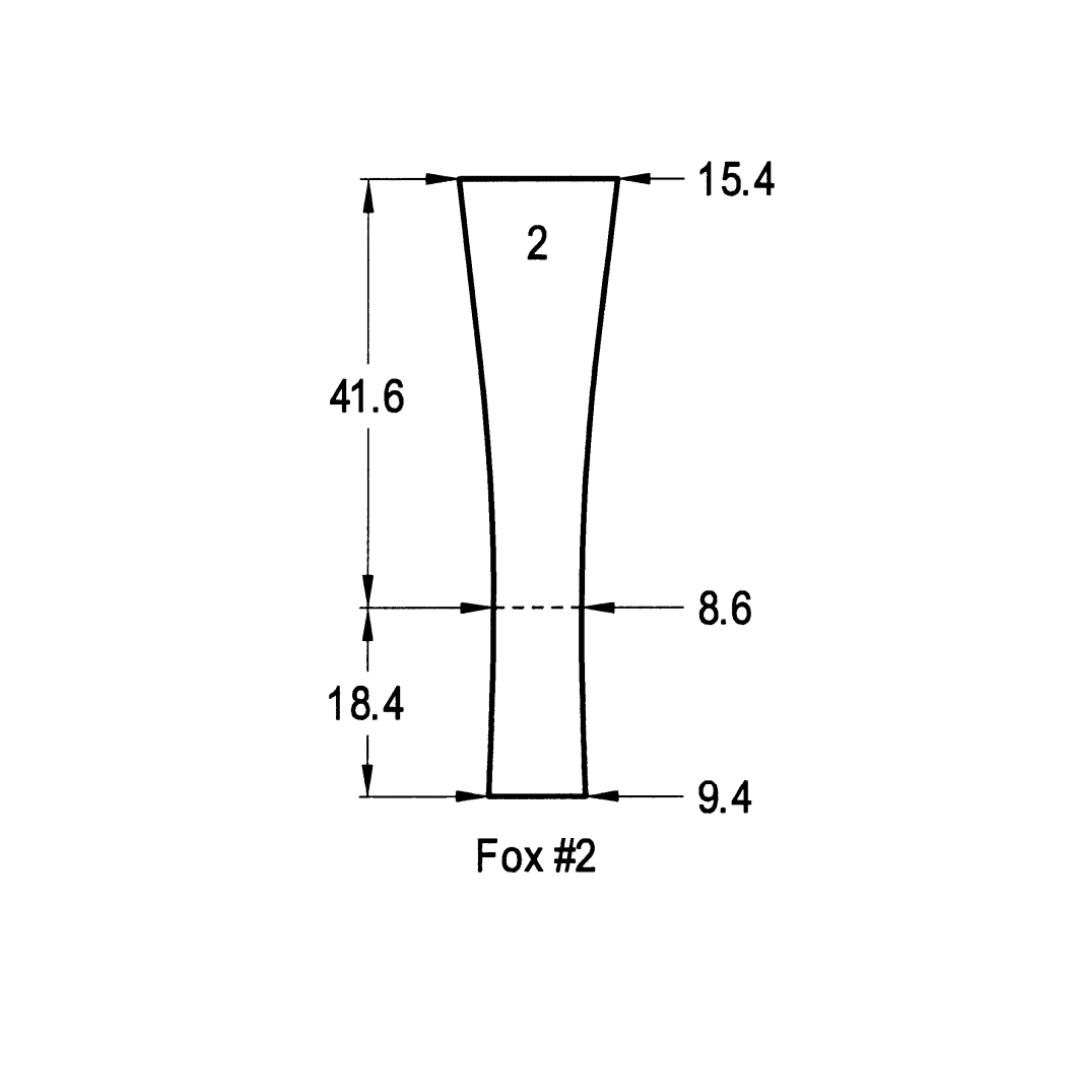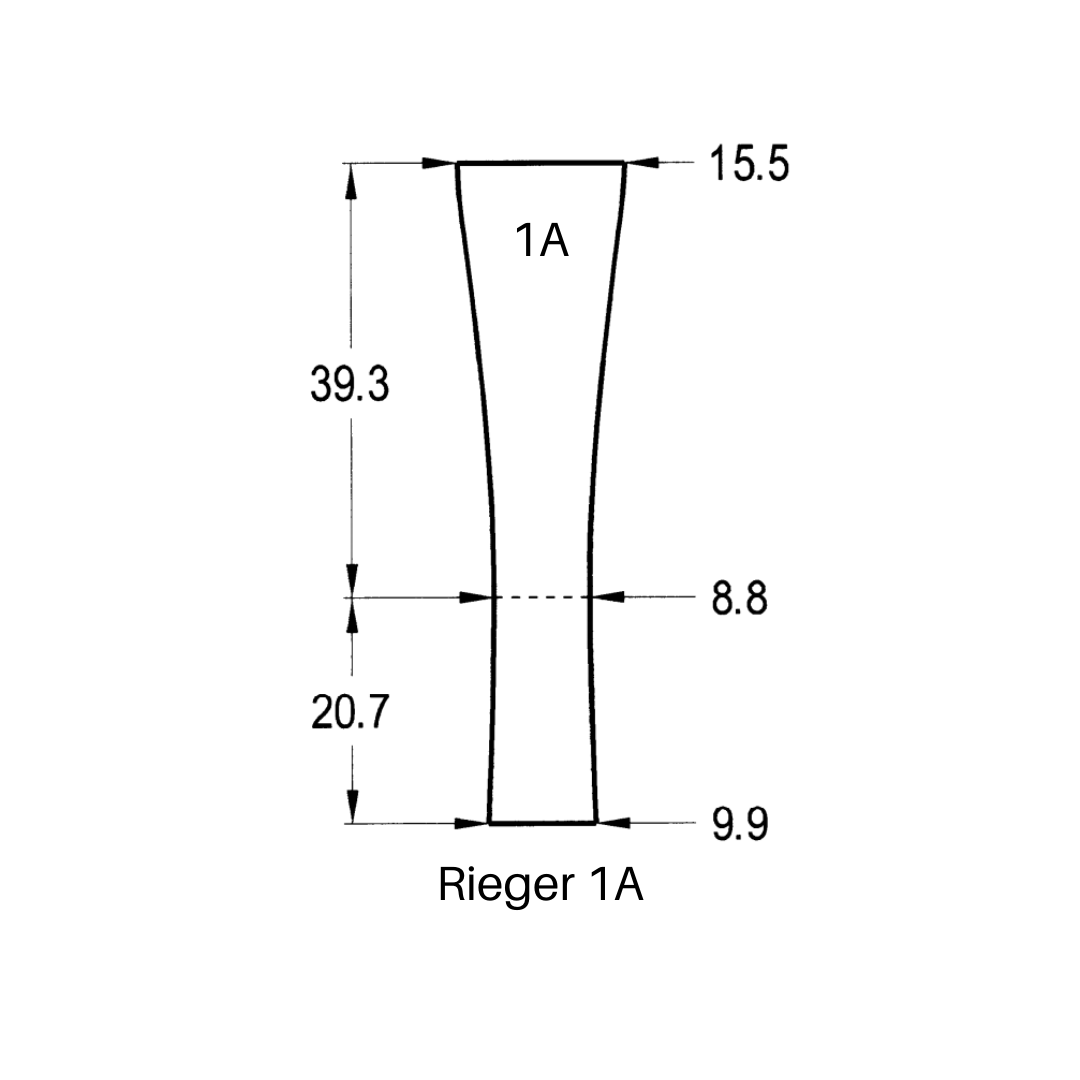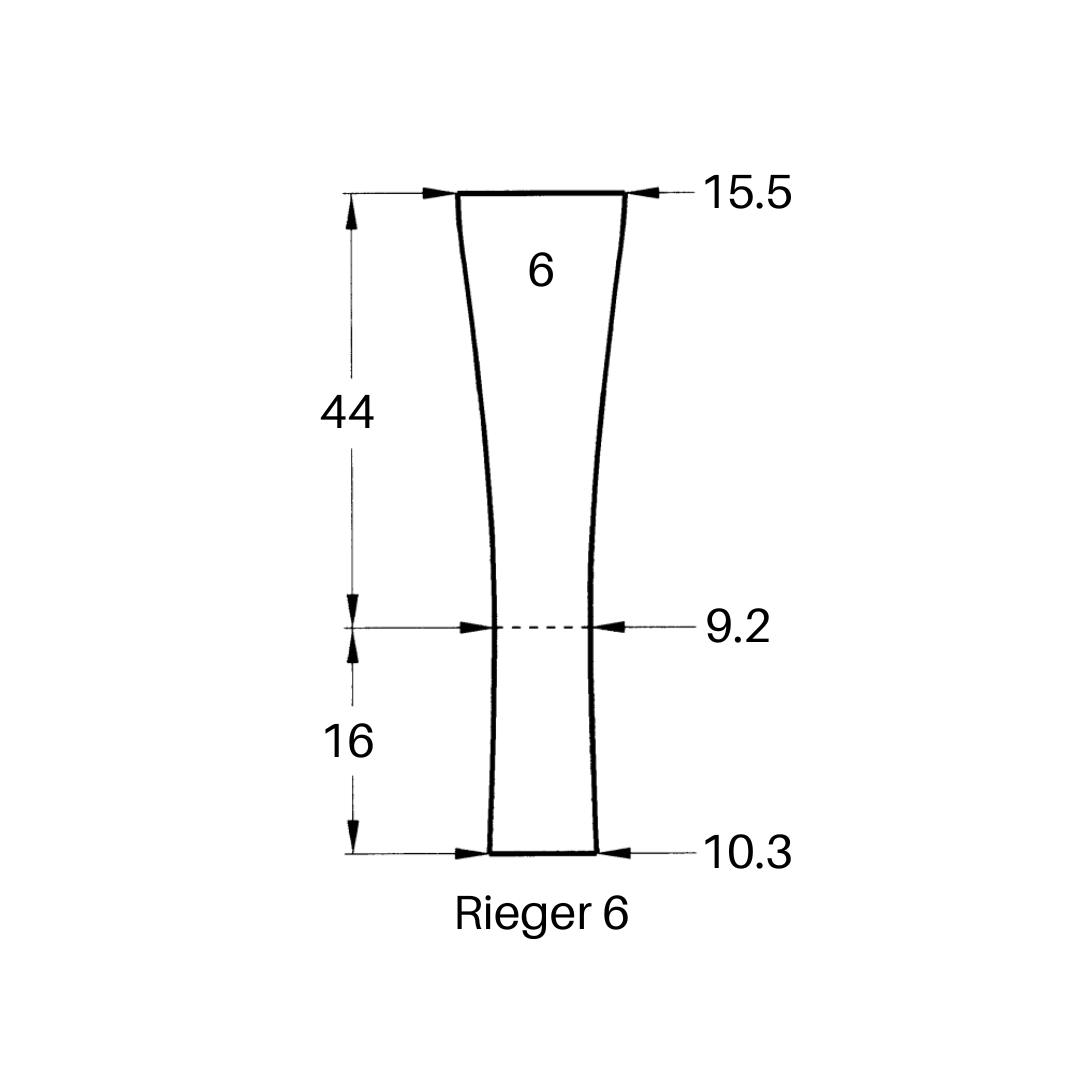Bassoon & Contrabassoon Reed Shapes
Available Bassoon reed shapes include:
Blain ‘Original’, Blain ‘Wide’ shape, Knochenauer, Fox 1, Fox 2, Fox 3, Herzberg Projects ‘Original’ shape, Rieger 1A, Rieger 2, Rieger 6
Available Contrabassoon reed shapes include:
Burl Lane ‘Original’ Shape, Rieger K1, Rieger K4, Rieger NN (Nielubowski)
Blain
The Blain bassoon reed shape is a modified Mechler style shape because of the reverse radius that reduces the tip flare. For the most part, this shape is simple and straightforward. The blade is straight with a couple of deviations; at the collar, and a reverse radius reduces the tip flare. The tube width is above average with a substantial flare contour to reduce reaming.
Fox 1
The Fox 1 bassoon reed shape is a modified Knochenauer shape and includes a combination of straight and curved segments.
Fox 2
The Fox 2 bassoon reed shape is one of the most popular reed shapes. Similar to the Rieger 1A, it is a almost a Knockenhauer shape with a straight-line blade.
Fox 3
The Fox 3 bassoon reed shape is the widest of the numbered fox bassoon shapes, a modified-Knochenauer shape, the Fox 3 shape includes a combination of straight and curved segments.
Fox K - Knochenauer
The Knochenauer bassoon reed shape is comprised of curves. There are no straight lines in the contour. The blade always flares outward with no inward curves.
Herzberg
The Herzberg bassoon reed shape is a very well-known reed shape among professional bassoonists. It is considered a modified Mechler style with a significant flare to 10.5mm at the end of the tube. This flare is adjusted while beveling to create lever action or fulcrum, which means the end of the final dimension of the tube is dependent on your preferred amount of beveling.
Danzi Regular
The Danzi Regular shape by Justin Miller is a straight shape blade similar to that of the reed maker and cane producer Danzi. This is a very popular reed shape favored by advancing students and some professionals for it’s ease of response and warm tone.
Note: This reed shape is truly the best for all-round reliable playability and does not require special scraping techniques, whether you prefer a wedge, tip-taper, or parallel scrape, this reed shape will respond accordingly on your bassoon. If you prefer a more refined or sophisticated reed style the Blain shape or Herzberg shape are recommended.
Rieger 1A
The Rieger 1A bassoon reed shape is one of the most popular reed shapes. Similar to the Fox 2, it is almost a Knochenauer style shape with a straight-line blade.
Rieger 2
The Rieger 2 bassoon shape is a true Knochenauer style shape. There are no straight lines in the contour and the blade flares outward.
Rieger 6
The Rieger 6 bassoon reed shape is a modified Mechler-style shape because of the 1) reverse radius that reduces the tip flare and 2) a goblet shape that is not truly apparent until forming the reed blank. Deviating from the Christlieb bassoon reed shape the blade continues to widen towards the tip. The Rieger 6 bassoon reed shape tends to have a good amount of resistance and a beautifully dark tone.
Contrabassoon Shapes
Contrabassoon reeds are highly variable between makers and very dependent on reed making pedagogy. I make my contrabassoon reeds to fit the general performance considerations of what I am playing and found if I am playing both bassoon and contra it is easier to go between the two instruments using a slightly smaller reed. For larger extended works like Beethoven’s Symphony No. 5, Brahms Symphonies, Verdi’s Don Carlo, Poulenc’s Dialogue of the Carmelites, and the like, a slightly larger reed is a bit more stable and less taxing over the duration of rehearsals and performances.
A few recommendations:
High School & College music students: The standard Contra shape is good for most everything, if you have issues with intonation in specific ranges of the scale, let me know the make of the contra and I may recommend the Rieger K1 or Rieger NN (Nielubowski) shape.
For extensive doubling: Standard, Burl Lane, or K4 with 68-70mm overall reed length
For extended symphonic playing or contra solos - Standard, Rieger K1, or Rieger NN (Nielubowski) with 70-72mm overall reed length
For significant orchestral excerpts like Salome or playing through Inconis’ Il Controfagotto: Whatever works- have fun and good luck!
About the shapes:
Rieger NN (Nielubowski) - Most popular contra reed shape & the one I play most of the time.
Rieger K4, Rieger NN, & Burl Lane Shape - Are all very soloistic with a large dynamic range. They all produce a very similar finished reed.
Rieger K1 - A very popular reed shape, it is a bit wider through the blade of reed producing a darker but still robust sound with good projection and stable intonation.
The Standard/Generic Contra Shape is a straight-line shaper and very good for general all-around playing. Great to have on hand if you do not spend a significant amount of time playing contrabassoon. Perfect for high school and college age musicians to have on hand.
Some Contra Rumblings:
Treat every contrabassoon like a new instrument.
Check to make sure it is in good working condition- scales!
Be sure to have the instrument maintained regularly by a reputable repair person (if it is a school’s instrument, advocate for the instrument to be maintained)
Try different bocals when possible!
Practicing scales across the full range of the contra goes a long way!
Working through Inconis Il Controfagotto (even very slowly) goes a long way!
Learn to adjust your reeds
*If you’re in college and play contrabasson in ensembles- have more than one reed! 🙄
